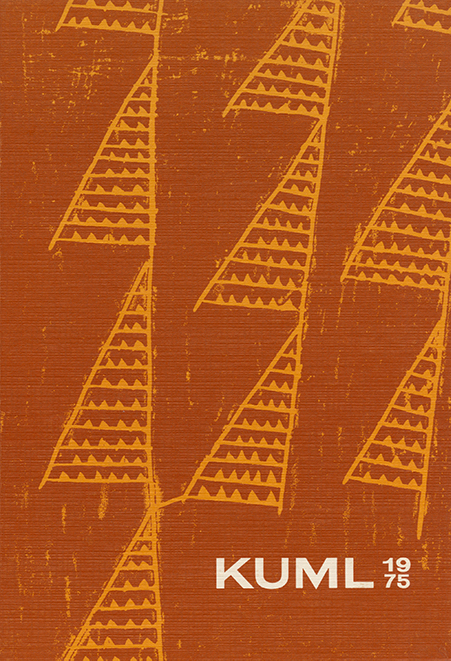Stendyngegrave ved Fjelsø
DOI:
https://doi.org/10.7146/kuml.v24i24.106161Nøgleord:
grave, stone packed, fjelsø, grav, stendækket, vesthimmerland, stenfyldt, mortuary house, dødehus, coffin, kisteResumé
Stone packing graves at Fjelsø
The stone packing graves described in this article were found close to the small village of Fjelsø in Vesthimmerland mid-way between Løgstør and Viborg in the north-central part of Jutland.
In 1968 Viborg Stiftsmuseum excavated two graves and a mortuary house (fig. 1). The two parallel WSW-ENE oriented graves measured 2.2 X 1.0 m and 2.4 X 1.2 m respectively and were 0.4-0.5 m deep. The southern grave was described as stone-covered but not full of stones, whilst the northern was covered by stones and filled at the eastern end.
Immediately west of the graves was the mortuary house. This was seen as a 2.2 X 2.0 m rectangular area covered by a heavy stone packing in up to three layers. At a depth of about 0.2 m two WSW-ENE oriented 0.1 m deep ditches were apparent, with depressions at the ends 0.1-0.2 m deep. On the elevation between the two ditches a thin-bladed axe was found under the covering stones.
As a longer row of stone packing graves was expected, responsibility was transferred to Forhistorisk Museum, Moesgård, which undertook brief excavations in 1969 and 1970. In spite of careful search only four further graves and a mortuary house 150 m further WSW were found.
The structures excavated by Forhistorisk Museum were as follows (fig. 2):
Grave I (fig. 2, I) was a 0.4 m deep grave measuring 1.9 X 1.3 m, in direct connection with a smaller 0.15 m deep pit measuring 0.4 X 0.4 m just east of it. The grave was filled above with a stone packing, but below the packing was found along the southern side only. Along the north side there were red and yellow sand layers above, and a dark sticky stripe of decayed material along the bottom.
Grave II (fig. 2, II). The farmer informed us that he had removed a very dense stone packing from a modern excavation measuring 2 X 1 m. Between the stones he had found the edge of a fully polished work-axe of greyish green stone.
Graves III and IV (fig. 2, III and IV). Two graves arranged in parallel measuring respectively 1.6 X 0.8 m and 1. 7 X 0.9 m with a depth of 0.3-0.4 m seem originally to have been covered with a common blanket of stones. There was a heavy stone packing at the west end and in the middle of each grave with stone-free channels along the edges (fig. 4). Along the bottom and partly up the sides was a grey layer which must be the remains of a cist (fig. 3).
The mortuary house was manifest as an area measuring 1.9 X 1.9 m, which at a depth of 0.1 m differentiated into two ENE-WSW oriented ditches measuring 1.5 X 0.4 and 1.5 X 0.5 m respectively, with a depth of about 0.4 m. The whole structure must have had a blanket of stones. On the bench between the ditches a thin-bladed axe of Store Valby type and a slender thin-bladed axe (fig. 5,1 and 2) were found under the stones.
South of the mortuary house and grave IV 410 g sherds of TRB V pottery (fig. 5, 3 and 4) were found in some thin dark soil.
The most important result of the excavation is the observation of dark stripes along the bottom and sides of the grave, stripes which in connection with observations on the position of the packing in the graves give us for the first time direct evidence of the presence of coffins in the stone packing graves.
Torsten MadsenDownloads
Publiceret
Citation/Eksport
Nummer
Sektion
Licens
Fra og med årgang 2022 er artikler udgivet i Kuml med en licens fra Creative Commons (CC BY-NC-SA 4.0).
Alle tidligere årgange af tidsskriftet er ikke udgivet med en licens fra Creative Commons.


